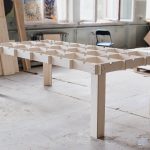As you know, we do not live by climbing alone, and we have allowed ourselves to be carried away by history. Knossos Castle is the oldest palace in Crete. These are ruins dating back to the period 2000-1400 BC, called the Minos Palace or the Cretan maze. It is the largest preserved building dating back to that period. Interestingly, it has been discovered quite recently. The excavation work was completed in 1905. Today, a few words about the Knossos Palace. I’m not a history expert, but I’ve got some information out.
The history of the castle dates back to 2000 BC. It is assumed that the palace itself was repeatedly rebuilt and extended. It is also suspected that it was partially destroyed during earthquakes. Despite about 600 years of history, the building has retained its functional unity. What we can see now is mostly a reconstruction of the castle from the late Minoan period, i.e. about 1500 BC.
The ruins of the palace are about 17400 m². In the basement, during archaeological work, warehouses with amphorae were found, among other things, where food was stored. Stocks of cereals, oils, wines, placed in large clay pots (called pitos), were discovered.
Hundreds of plates covered with linear scriptures, a royal throne and a large number of valuable frescoes were found, depicting scenes from the lives of the people of the time. In the ruins of the palace numerous monuments have also been discovered, such as ceramic figures, dishes, glyphics and plates covered with linear letters A and B.
The highly dense wall system has brought to mind a labyrinth of explorers. These numerous rooms served as warehouses, utility rooms, production rooms, apartments and sacral buildings. At the time of its greatest bloom, the five-storey Knossos Castle had about 1,300 rooms, which could accommodate several thousand people!
What was the most interesting for us during the sightseeing tour? The palace was functionally very well developed. Already 2000 years BC. There was a complicated water supply system, rainwater drainage system and sewage system. There was access to running water and even a toilet where the shell was rinsed with water. There were also baths and heated rooms.
I would also like to add that frescoes have been preserved on the excavated walls and columns of the palace – they are now exhibited at the National Archaeological Museum in Heraklion. There are copies in Knossos.
The access to Knossos is very easy and well marked. It is best to go to Heraklion and from there are signs. Entrance to the palace costs about 15 EU. A nice option for a rest day, but only on condition that you like the story. In the summer there are supposedly crowds here, but when we were there, the tour went quite smoothly. People who don’t like to go deeper in cultural history can be disappointed.
Did I inspire you? Give a puppet. Your recommendation is important to me.
Read more about the attractions on Crete:
Climbing on Crete – CLICK
Pink beach – Laguna Elafonisi
Walk through Chania
Knos Castle civilization 2000 years BC











